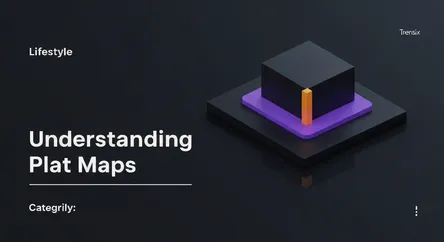Lifestyle
Understanding Plat Maps

Discover what a plat map is and why this detailed property diagram is essential for homeowners, buyers, and developers in real estate.
What is it?
A plat map, also known as a parcel map or subdivision map, is a detailed diagram drawn to scale that shows how a tract of land is divided into individual lots. It is a legal document filed with a county or city's public records office. A plat map precisely defines the boundaries, dimensions, easements, flood zones, and rights-of-way for each parcel of land within a subdivision. It serves as a crucial reference for surveyors, real estate agents, and government officials to understand the layout and legal description of a property.
Why is it trending?
Interest in plat maps is rising due to a dynamic real estate market and an increase in new construction projects. As more people invest in property, the need for clear, legally-defined boundaries becomes paramount to avoid disputes. Furthermore, with the rise of DIY home improvement projects like building fences or additions, homeowners are more proactive in understanding their property's limitations, such as utility easements shown on these maps. Increased online accessibility through county websites has also made it easier for the public to find and consult plat maps for their own due diligence.
How does it affect people?
A plat map directly impacts property owners, buyers, and developers. For a homebuyer, it provides definitive proof of property lines, preventing potential conflicts with neighbors. It also reveals any easements that might restrict how the land can be used, for example, preventing the construction of a pool or shed in a specific area. For developers, plat maps are the foundation for creating new subdivisions, ensuring that all new lots conform to local zoning regulations and ordinances. Essentially, it provides a clear, legal blueprint of a property's rights and restrictions, offering peace of mind and legal clarity.